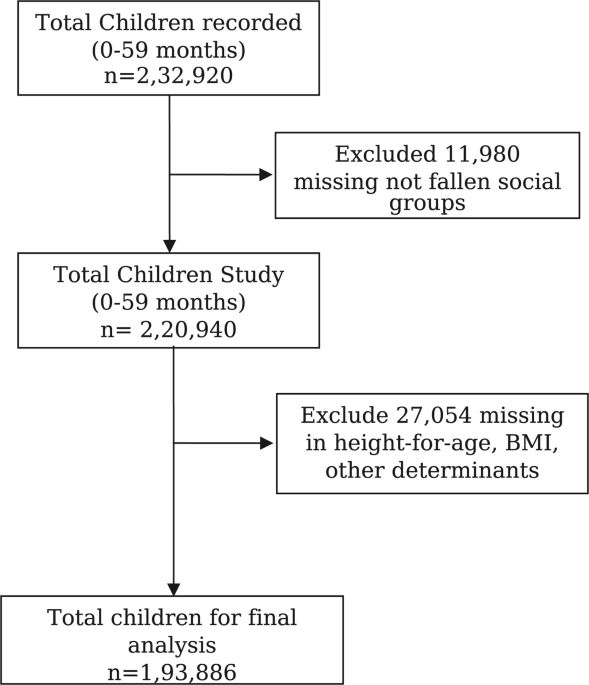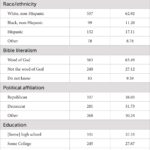Hailu, B. A., Bogale, G. G. & Beyene, J. Spatial heterogeneity and factors influencing stunting and severe stunting among under-5 children in Ethiopia: spatial and multilevel analysis. Scientific Reports 10, 1–10 (2020). (2020).
World Health Organization. Childhood Stunting: Challenges and Opportunities. (2013).
Victora, C. G. et al. Maternal and child undernutrition: consequences for adult health and human capital. Lancet. 371, 340–357 (2008).
De Onis, M. et al. The world health organization’s global target for reducing childhood stunting by 2025: rationale and proposed actions. Matern Child. Nutr. 9, 6–26 (2013).
Marx, S. et al. Geographic information analysis and web-based geoportals to explore malnutrition in Sub-saharan Africa: a systematic review of approaches. BMC Public. Health. 14, 1–12 (2014).
UNICEF / WHO / World Bank Group Joint Child Malnutrition Estimates: Key findings of the 2023 edition. Levels and Trends in Child Malnutrition. (2023).
Fanzo, J., Hawkes, C., Udomkesmalee, E. & Afshin, A. Global Nutrition Report: Shining a Light to Spur Action on Nutrition. (2018). http://eprints.mdx.ac.uk/25842/
ICF & IIPS. NATIONAL FAMILY HEALTH SURVEY (NFHS-5) 2019-21 INDIA. (2021). http://www.rchiips.org/nfhs
Bora, J. K., Raushan, R. & Lutz, W. The persistent influence of caste on under-five mortality: factors that explain the caste-based gap in high focus Indian states. PLoS One. 14, e0211086 (2019).
Raushan, R. & Prasad, S. Social Disparity in Morbidity and Treatment seeking Behaviour: a Macro-level Study. (2018). 3, 65–81
Rekha, S., Shirisha, P., Muraleedharan, V. R., Vaidyanathan, G. & Dash, U. Wealth inequalities in nutritional status among the tribal under-5 children in India: a temporal trend analysis using NFHS data of Jharkhand and Odisha states – 2006-21. Dialogues Health. 2, 100135 (2023).
Dhamija, G., Kapoor, M., Kim, R. & Subramanian, S. V. Explaining the poor-rich gap in anthropometric failure among children in India: an econometric analysis of the NFHS, 2021 and 2016. SSM Popul. Health 23, (2023).
Bharati, S., Pal, M., Bhattacharya, B. N. & Bharati, P. Prevalence and causes of chronic energy deficiency and obesity in Indian women. Hum. Biol. 79, 395–412 (2007).
Padigapati, V. N. S., Singh, A., Velayudhan, P. K., Perumal, A. & Ramalingam, S. Examining the prevalence and predictors of stunting in Indian children: a spatial and multilevel analysis Approach. Agricultural Res. 1–12 (2024).
Prasad, J. B., Pezhhan, A. & Patil, S. H. Effect of wealth, social inequality, Mother’s BMI, and education level on child malnutrition in India. Diabetes Metabolic Syndrome: Clin. Res. Reviews. 15, 102304 (2021).
Frongillo, E. A., De Onis, M. & Hanson, K. M. P. Socioeconomic and Demographic Factors Are Associated with Worldwide patterns of stunting and wasting of children. J. Nutr. 127, 2302–2309 (1997).
Swaminathan, S. et al. The burden of child and maternal malnutrition and trends in its indicators in the States of India: the global burden of Disease Study 1990–2017. Lancet Child. Adolesc. Health. 3, 855–870 (2019).
Khadse, R. P. & Chaurasia, H. Nutrition status and inequality among children in different geographical regions of Maharashtra, India. Clin. Epidemiol. Glob Health. 8, 128–137 (2020).
Sundar Budhathoki, S. et al. Stunting among under 5-year-olds in Nepal: trends and risk factors. Matern Child. Health J. 24, 24 (2020).
Tiwari, R., Ausman, L. M. & Agho, K. E. Determinants of stunting and severe stunting among under-fives: evidence from the 2011 Nepal Demographic and Health Survey. BMC Pediatr. 14, 1–15 (2014).
Akombi, B. J. et al. Stunting and severe stunting among children under-5 years in Nigeria: a multilevel analysis. BMC Pediatr. 17, 1–16 (2017).
Joe, W., Mishra, U. S. & Navaneetham, K. Inter-group inequalities in child undernutrition in India: Group Analogue of the Gini Coefficient and Atkinson’s index. Oxf. Dev. Stud. 41, 239–257 (2013).
Sarkar, S. Cross-sectional study of child malnutrition and associated risk factors among children aged under five in West Bengal, India. Int. J. Popul. Stud. 2, 89–102 (2016).
World Health Organization. Nutrition Landscape Information System (NLiS) Country Profile Indicators: Interpretation Guide, Second Edition. (2019).
Akombi, B. J. et al. Stunting, wasting and underweight in sub-saharan Africa: a systematic review. Int. J. Environ. Res. Public. Health. (2017).
Ajmer, S. et al. Determinants of childhood stunting in India: comparative evidence from Bihar. Agric. Food Nutr. Security: Study Availab. Sustain. India. 273-293 (2021).
Tariq, I., Khan, J. I. & Malik, M. A. Decomposing acute malnutrition by educational inequality of mother’s among under five children in Jammu and Kashmir. Scientific Reports 13, 1–8 (2023). (2023).
Huda, T. M., Hayes, A., El Arifeen, S. & Dibley, M. J. Social determinants of inequalities in child undernutrition in Bangladesh: a decomposition analysis. Matern Child. Nutr. 14, (2018).
Gizaw, Z., Yalew, A. W., Bitew, B. D., Lee, J. & Bisesi, M. Stunting among children aged 24–59 months and associations with sanitation, enteric infections, and environmental enteric dysfunction in rural northwest Ethiopia. Scientific Reports 2022 12:1 12, 1–11 (2022).
Jena, S. K., Dolui, M., Ghoshal, S. & Sarkar, S. Demographic and socio-economic correlates of knowledge of the ovulatory cycle among tribal women in India: evidence from the nationally representative survey (NFHS-5). BMC Public. Health. 24, 1–14 (2024).
Dolui, M., Sarkar, S., Ghosh, P. & Hossain, M. Dietary diversity and association with non-communicable diseases (NCDs) among adult men (15–54 years): a cross-sectional study using National Family and Health Survey, India. PLOS Global Public. Health. 3, e0001775 (2023).
Dolui, M. Household indoor air pollution and association with heart disease among women in India: Evidence from the nationally representative survey (NFHS-5). in 43rd IIG Annual Meet and International Conference on Challenges Of Future Earth: Social, Economic and Environmental Sustainability (2022).
Ghosh, P., Hossain, M. & Sarkar, S. Inequality among Social groups in Accessing Improved drinking Water and Sanitation in India: a District-Level spatial analysis. Prof. Geogr. 75, 361–382 (2023).
Jann, B. & Fairlie Stata module to generate nonlinear decomposition of binary outcome differentials. (2006).
Fairlie, R. W. The absence of the African-American Owned Business: an analysis of the dynamics of Self‐Employment. J. Labor Econ. 17, 80–108 (1999).
Yuan, L. et al. Decomposition analysis of health inequalities between the urban and rural oldest-old populations in China: evidence from a national survey. SSM Popul. Health. 21, 101325 (2023).
Van De Poel, E. & Speybroeck, N. Decomposing malnutrition inequalities between scheduled castes and tribes and the remaining Indian population. Ethn. Health. 14, 271–287 (2009).
Sharma, H. & Smieliauskas, F. Undernutrition inequality between dalits and non-dalits in Nepal – A decomposition analysis. World Dev. 159, 106040 (2022).
Sarkar, S. Consumption pattern and determinants of nutritional intake among rural households of West Bengal, India. J. Settlements Spat. Plann. 6, 85–94 (2015).
Akombi, B. et al. Trends in socioeconomic inequalities in child undernutrition: evidence from Nigeria Demographic and Health Survey (2003–2013). PLoS One 14, (2019).
Makoka, D. The Impact of Maternal Education on Child Nutrition: Evidence from Malawi, Tanzania, and Zimbabwe. (2013). https://dhsprogram.com/publications/publication-wp84-working-papers.cfm
Kumar, R. & Paswan, B. Changes in socio-economic inequality in nutritional status among children in EAG states, India. Public. Health Nutr. 24, 1304 (2021).
Sinha, R., Dua, R., Bijalwan, V., Rohatgi, S. & Kumar, P. Determinants of Stunting, Wasting, and underweight in five high-burden pockets of four Indian States. Indian J. Community Med. 43, 279 (2018).
Kirchengast, S. & Hartmann, B. Maternal prepregnancy weight status and pregnancy weight gain as major determinants for newborn weight and size. Ann. Hum. Biol. 25, 17–28 (1998).
Schmidt, C. W. Beyond malnutrition: the role of sanitation in stunted growth. Environ. Health Perspect. 122, A298–A303 (2014).
Fink, G., Günther, I. & Hill, K. The effect of water and sanitation on child health: evidence from the demographic and health surveys 1986–2007. Int. J. Epidemiol. 40, 1196–1204 (2011).
Spears, D., Ghosh, A. & Cumming, O. Open Defecation and Childhood Stunting in India: an Ecological Analysis of New Data from 112 districts. PLoS One. 8, e73784 (2013).
Dwivedi, L. K., Banerjee, K., Jain, N., Ranjan, M. & Dixit, P. Child health and unhealthy sanitary practices in India: evidence from Recent Round of National Family Health Survey-IV. SSM Popul. Health. 7, 100313 (2019).
Singh, S., Srivastava, S. & Upadhyay, A. K. Socio-economic inequality in malnutrition among children in India: an analysis of 640 districts from National Family Health Survey (2015-16). Int. J. Equity Health. 18, 1–9 (2019).
Tadevosyan, M. et al. Factors contributing to rapidly increasing rates of cesarean section in Armenia: a partially mixed concurrent quantitative-qualitative equal status study. BMC Pregnancy Childbirth 19, (2019).
Suwanrath, C., Chunuan, S., Matemanosak, P. & Pinjaroen, S. Why do pregnant women prefer cesarean birth? A qualitative study in a tertiary care center in Southern Thailand. BMC Pregnancy Childbirth. 21, 1–6 (2021).
Saaka, M. & Hammond, A. Y. Caesarean Section Delivery and Risk of Poor Childhood Growth. J Nutr Metab (2020). (2020).
Singh, S. K. & Vishwakarma, D. Gudakesh Malnutrition among children in India: exploring the contribution of the integrated child development service scheme. SN Social Sciences 2024 4:2 4, 1–19 (2024).
SDG 2.2. End All Forms of Malnutrition | ICCROM | Our Collections Matter. https://ocm.iccrom.org/sdgs/sdg-2-zero-hunger/sdg-22-end-all-forms-malnutrition
Shekar, M. et al. Reaching the global target to reduce stunting: an investment framework. Health Policy Plan. 32, 657–668 (2017).
Budge, S., Parker, A. H., Hutchings, P. T. & Garbutt, C. Environmental enteric dysfunction and child stunting. Nutr. Rev. 77, 240–253 (2019).
Harper, K. M., Mutasa, M., Prendergast, A. J., Humphrey, J. & Manges, A. R. Environmental enteric dysfunction pathways and child stunting: a systematic review. PLoS Negl. Trop. Dis. 12, e0006205 (2018).



